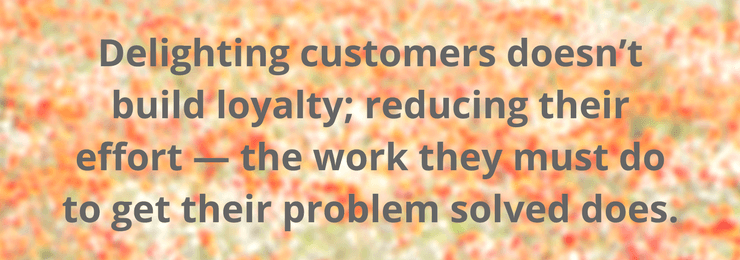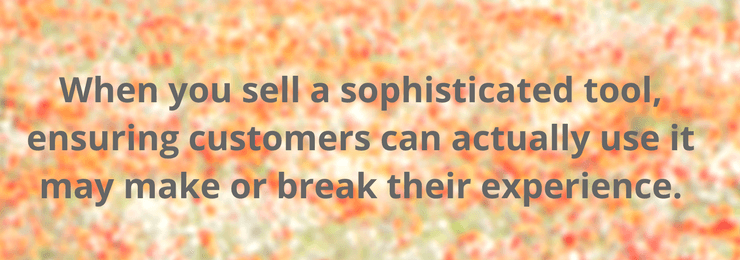Remember the fable of the goose that laid golden eggs? Customer retention isn’t far off from the old wives tale.
In the story, a farmer has a goose who lays golden eggs, but in a moment of impatience and greed, he decides to cut the goose open to extract the gold from within. Upon doing so he discovers not only that the goose is entirely ordinary on the inside, but that he has effectively killed his cash flow.
The moral of this story is to look at your customer lifetime value (CLV) rather than any single transaction. Customers, like golden-egg-bearing geese, require patience and a nurturing, symbiotic relationship.
One customer in the hand is better than two in the bush for several reasons. For one, maintaining customer satisfaction drives a much smaller bill than advertising and selling to a new one. Additionally, a happy customer will tell their friends about your products or services, acting as a free marketing service.
Here are the Top 7 Customer Retention Strategies to Boost Your Brand:
#1 Ask: How happy are your customers?
The first step to making your customers happy is to find out how happy they currently are.
Conduct a survey to determine current levels of customer satisfaction. It is also a good idea to do your research on existing customers, especially the ones who are successfully maintained. Build profiles to fully understand who these customers are and what makes them happy with your product or service.
The information you gather will help you understand your brand’s strengths and weaknesses, and build an effective customer retention strategies.

#2 Reduce Customer Effort
There is a common misconception circling the business world implying that customers need to be constantly enchanted, dazzled and wooed.
The Harvard Business Review debunked this myth with the help of a study by the Customer Contact Council. Their two critical findings were:
- Delighting customers doesn’t build loyalty; reducing their effort — the work they must do to get their problem solved does.
- Acting deliberately on this insight can help improve customer service, lower customer service costs, and reduce customer churn.
In other words, quality over quantity: simply meeting customer needs and simplifying the effort they put in will go much further than offering extra frills, fluff and freebies.
Reduce customer effort with self-service using WalkMe’s onscreen guidance.
#3 Encourage for Engagement
Especially when it comes to the world of software, engagement is the single most predictive component to customer retention. Simply put, a customer who does not use your product, will not come back for more.
It is critical to encourage customer engagement. This can be as simple as making a small request. Foot-in-the-door technique describes a psychological phenomenon where people are more likely to agree to larger requests if you start with small ones.
The principle states that once a person agrees to something, they will convince themselves to continue to commit along the same trajectory. A small request is easy for your customers to agree to, and once they have, they will be likely to continue to comply in the future.
Another way to create engagement is by use of excitement. Excitement is a state of emotional arousal, disrupting the body’s normal homeostasis and preparing the body for action. Strong emotional content can serve our purpose, with shareable, viral content leading the way.
#4 Label Customers to Create a Sense Progress
Contrary to common belief — individuals crave labels. Humans want to fit into a group, to know where they stand in relation to others.
Brands can capitalize on this desire by creating tiers of loyalty. This gives customers something to work towards.
Think about an airline reward programs — there are silver, platinum and gold members. A hierarchy of levels creates a sense of urgency to move forward and engage more.

#5 Sweeten the Deal
While extras aren’t a substitute for quality and execution of the core product, a cherry on top in the form of exceptional service, waived fees or a personal touch goes a long way to build the customer-brand relationship.
For organizations looking to build customer loyalty, it’s important to remember the principle of reciprocity. It states that if you give someone something small, they feel the need to return the favor. This is used in many areas of marketing, for example, the classic “free sample” tactic.
Developing the customer-centricity that encourages customer devotion to a brand must start from a company’s leadership.
#6 – Give Customers the Tools to Succeed
Gone are the days where companies can push a product or service out into the world and forget about it. To retain today’s customers, organizations must think ahead and plan for their success.
For software companies this translates to effective onboarding. It is estimated that 40-60% of software users will open an app once, and never log in again. When you sell a sophisticated tool, ensuring customers can actually use it may make or break their experience.
For low-tech companies, simply making customers aware of any additional services you offer can go a long way. Does your website offer have additional information? How can your customer service representatives be of service? Putting this information at the tips of customers’ fingers will offer a feeling of support post-purchase.
Provide better support for your customers using WalkMe’s guidance tool.
#7 – Reiterate Your Value
Don’t be shy to remind your customers of what they are getting from you. This can be in the form of email campaigns, or reminders built in to your product. Customers are aware of whether or not their expectations are being met; if the job is being done well, bring this fact to their attention.
The principle of social proof is also worth looking at in this context. Humans are predisposed to follow the advice of the masses, and tend to trust a product or service that many or trusted people have endorsed.
Expose your existing customers to the raving testimonials and case studies of other happy customers. This will not only remind them the worth of the service or product they are already paying for, but may also serve to increase customer satisfaction and loyalty.

